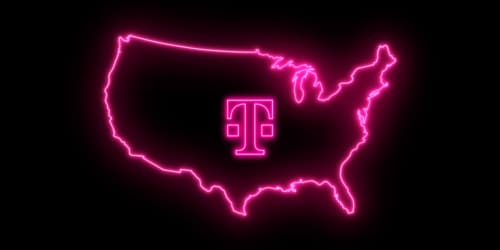Why would Canada’s leading robotics research and development company choose T-Mobile for U.S. operations? It’s a good question, and we’ve got a pretty good answer.
First though, you’ll need some background about us.
At InDro Robotics, we build, deploy and sell robots. We and our clients then operate them remotely, sometimes from very great distances, using cellular networks.
Many of our products are ground robots, built for inspecting remote assets. For example, our Sentinel robot has been designed from the ground up for deployment at places like electrical substations – remote facilities which are not staffed, but which require regular inspections.
Recently, Indro Robotics took Sentinel down to Lenox, Massachusetts for an interesting mission. We had been invited by EPRI – the Electric Power Research Institute, a non-profit energy research and development organization. One of its missions is to optimize processes – and then pass along its results to hundreds of members in the electrical energy sector.
For this mission, EPRI asked us to bring Sentinel to its own electrical substation test facility. It wanted to put several inspection robots through their paces in a real-world environment.
In fact, EPRI’s substation has been purpose-built for such testing, and even has the ability to create ‘rain’ via an elevated system of water pipes. There would be gauges to read (even when wet – thankfully, Sentinel has wipers that can clean off the camera), arcing to detect, and even widespread electro-magnetic interference. Most of these Sentinel tests, which took place over the course of a week (both day and night), would be manually operated. But it also had some autonomous runs.
On nearly all missions, however, there’s a human being behind the scenes. Sitting at a computer console, the operator manually drives Sentinel remotely, monitoring the mission and checking to ensure operations are running smoothly.
The communications between robot and operator take place over cellular networks, allowing us to run missions from hundreds – even thousands – of miles away. While this can be done over 4G (LTE), the gold standard is a robust and reliable 5G network. This allows for near zero-latency during operations and provides the bandwidth for streaming dense data back to mission control (and even directly to the Cloud).
To give you an idea of the type of data we need to compute and send back to operators, here are just some examples of what Sentinel can do:
- Optical Zoom: With a 30x optical pan-tilt-zoom camera, Sentinel can zero in on small details – everything from reading gauges to inspecting wires for damage from animals – even assessing the scene following severe weather events.
- Temperature Monitoring: Its thermal camera can sense temperature anomalies that could be a sign of a problem.
- Arc Detection: Electrical sparking that can lead to fires – the Sentinel’s thermal camera can detect this immediately.
- 3D Mapping: With an optional LiDAR (Light Detecting and Range) sensor, Sentinel can create a 3D map of its environment, allowing Sentinel to figure out where it’s going in autonomous mode. This is known in the robotics biz as Simultaneous Localization and Mapping, or SLAM.
You already know Sentinel is operated and monitored remotely over cellular networks. It’s critical that these are robust and reliable networks, as we are always looking for dense data throughput with near-zero latency when operating our robots and drones. We simply can’t afford to have network issues or dead zones during deployment. And, increasingly, our work is taking InDro robots to the United States. Because of this, we selected T-Mobile as our American network of choice for the Lenox operations.
T-Mobile’s excellent 5G network was the clear choice for this mission-critical deployment. It performed flawlessly, carrying all the data from Sentinel to our monitors in near real-time. The test proved T-Mobile’s 5G reach to perform critical operations in rural areas. While this was just one test, the potential T-Mobile’s network offers is an exciting prospect for future U.S. deployments.
Sentinel is but one of many robots developed by Indro Robotics. We are even now operating quadruped robots – the ones that look like dogs – over cellular connections. We also operate flying drones via cellular, enabling missions with a high degree of complexity piloted remotely by an operator with a computer.
As we continue to deploy in the U.S., we’re confident our operations will be served well both by our robots – and by T-Mobile. In the end, it’s all about data for us – and T-Mobile’s 5G network delivers.





